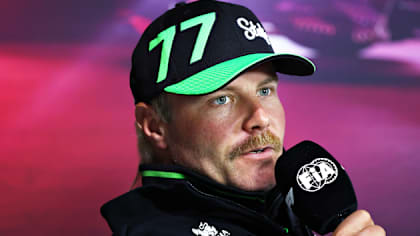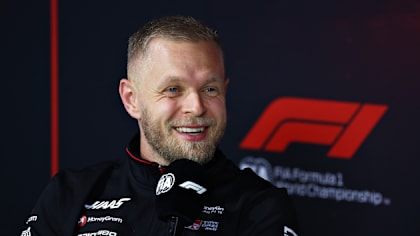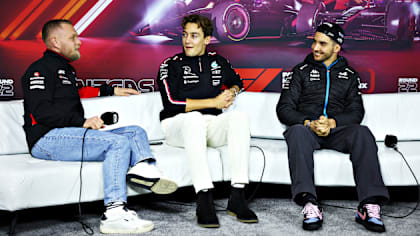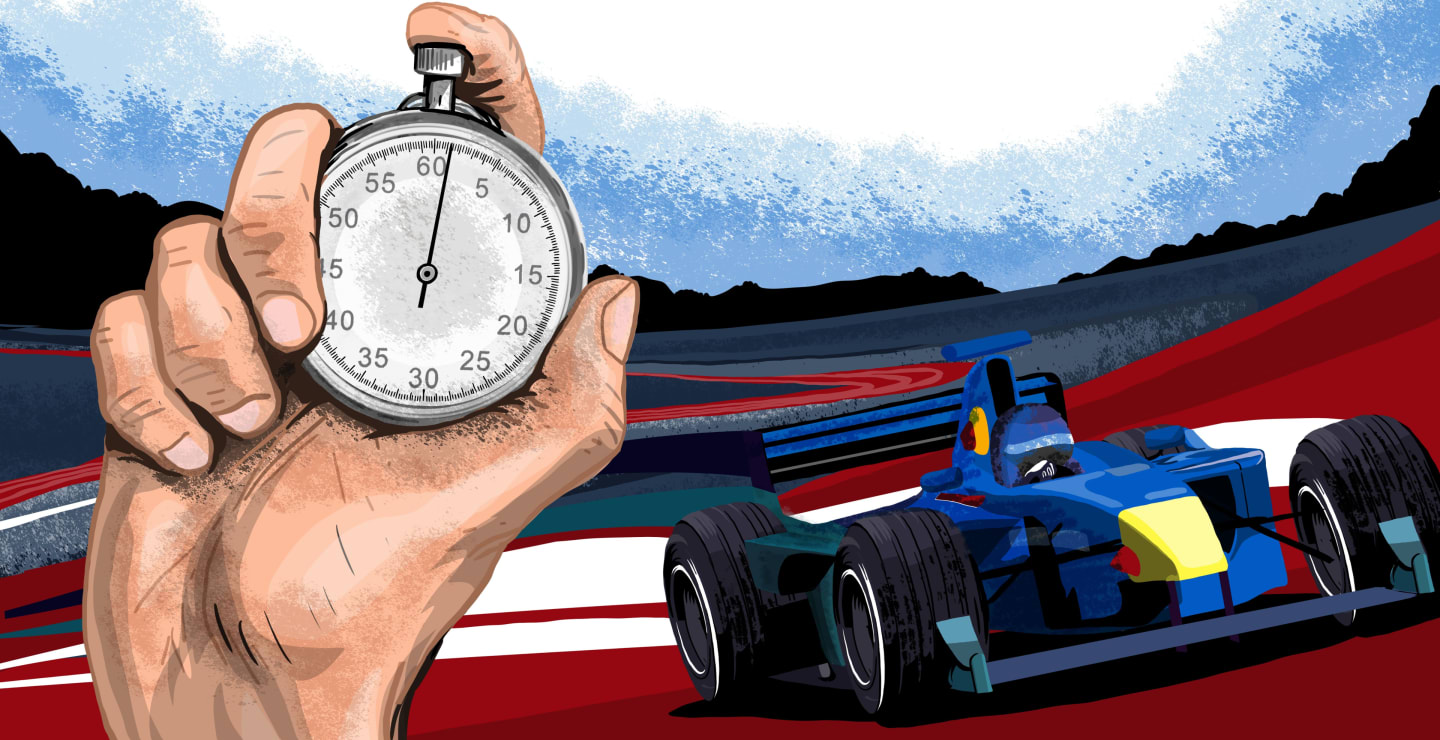
Feature
ORAL HISTORY: The inside story of Kimi Raikkonen's legendary first F1 test
Share

Kimi Raikkonen announced on Wednesday evening that the 2021 season would be his last in Formula 1. It means the season finale at Abu Dhabi will bring the curtain down on a remarkable Grand Prix career that now spans two decades. And it all began when he took part in his very first F1 test at Mugello more than 20 years ago. In this piece, which was first published in 2019, you will hear from those who witnessed a test that has gone down in legend and which changed Raikkonen's life forever...
It was an autumnal day at Mugello, a daunting high-speed circuit nestled away in northern Tuscany that used to be a favourite among F1 teams for testing. The year was 2000 and a three-day test in September, starting two days after the Italian Grand Prix at Monza, had been scheduled for those who wanted to use the facility. Ferrari, McLaren and Sauber opted in. For title rivals Ferrari and McLaren, the test was useful to gather data and test new parts for the upcoming races. For Sauber, it was about giving a star the chance to shine.
Kimi Raikkonen, a then 20-year-old from Espoo – Finland’s second largest city – with just 23 car races under his belt, was flying in to get his first taste of Formula 1 machinery. His command of English was limited. His approach was to stay quiet and let his driving do the talking. He was so young, Sauber had to send a mechanic to fetch him from the airport as he was not yet legally old enough to drive in Italy.
Despite all this, his managers – father and son duo David and Steve Robertson – had convinced the outfit’s founder and owner Peter Sauber to give their boy a shot. Over the course of three days, the Finn shocked not only Sauber but also F1 great Michael Schumacher...
How it came about
The Robertsons knew they had a talent on their hands, so they got in touch with a number of F1 teams, one of which was Peter Sauber. David Robertson called Sauber and made his pitch. It proved persuasive enough for the team’s founder to agree to a face-to-face meeting…
Peter Sauber, Team Principal: “I had a meeting with David at the Hungarian Grand Prix on 12th August 2000. He spoke very enthusiastically about Kimi. I met him for the first time at the test at Mugello. I am still surprised that I agreed to this test, because a three-day test is very expensive. Obviously David succeeded in infecting me with his enthusiasm.”
Willy Rampf, Technical Director: “Internally, the senior team were pushing he gets a test in one of our cars, so we were excited that Kimi would have the chance. We backed Kimi to get a test drive.”
Steve Robertson, Raikkonen’s Manager: “My father laid out the facts, explaining what this kid had done in a short period of time in Formula Renault. He was winning 80% of the races and not just winning, he was winning with some huge margins. Peter was intrigued by that. He was a real racer at heart. My father tried to convince him that if he didn’t take Kimi this year, he wouldn’t see him again as he would get swallowed up by a big team.”
Jacky Eeckelaert, Race Engineer: “It’s amazing to think that 12 months before we tested Kimi, he was a kart driver. So it was a bit special, of course. I had been advised by people from the professional karting world that he was something of an exception. That’s why Peter agreed to test him. In a very short time at that test, he was up to pace with a Formula 1 car. In those days, it was more horsepower and lots of downforce so not an easy thing.”
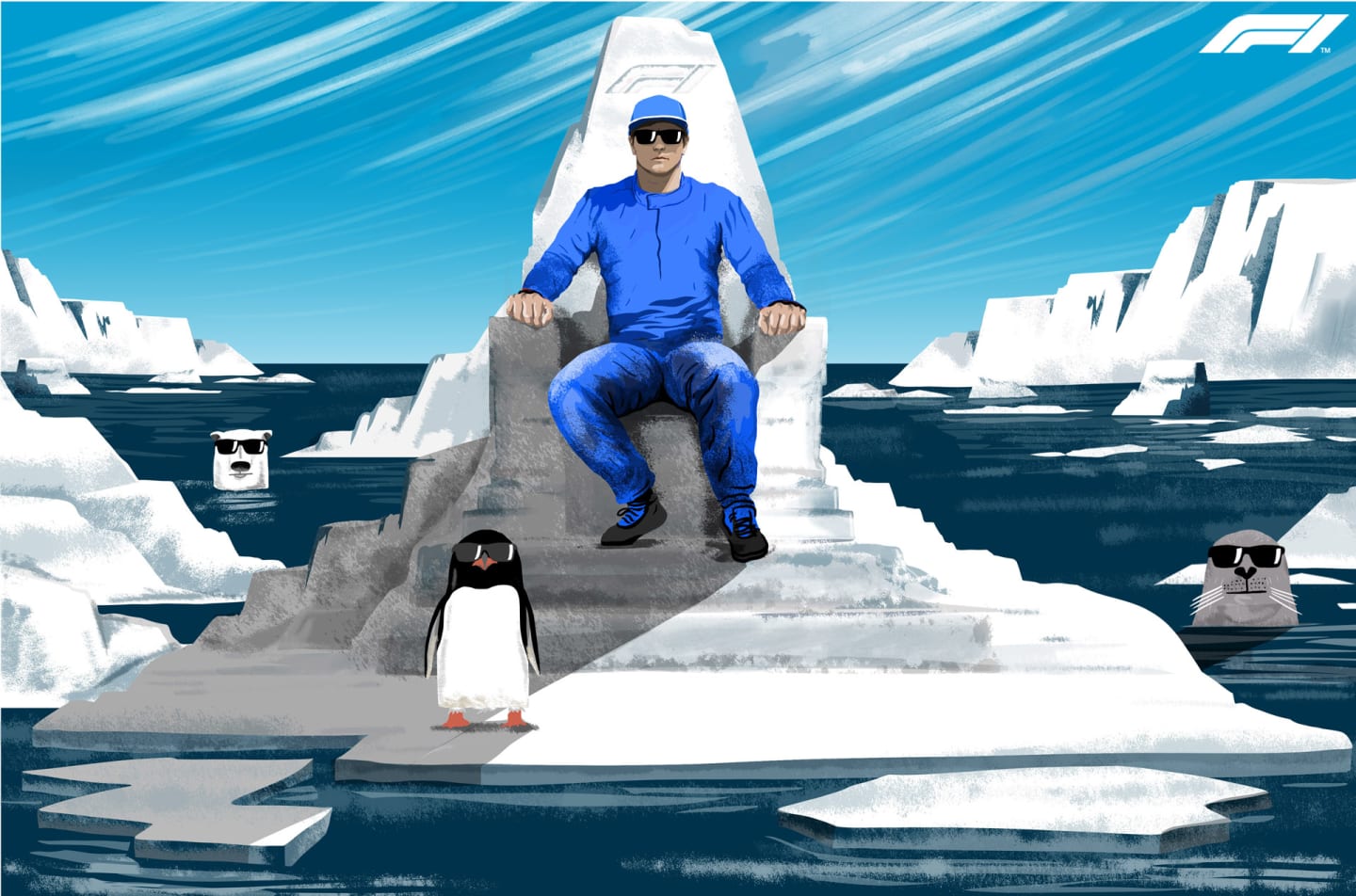
Keeping it under wraps
Naturally, Sauber wanted to keep Raikkonen’s test quiet to fend off the threat of a rival team taking an interest, particularly as he didn’t yet have a contract. Obviously Ferrari and McLaren were present at the test, but Sauber ensured there was no fanfare. Their run plans were kept secret and even inside the team, talk of the Raikkonen test was on a need-to-know basis.
Willy Rampf: “We didn’t tell everybody what we were doing with Kimi. Within the team, we knew he was special. We had to find a name for the driver to keep his identity a secret. We could not say this is Kimi Raikkonen when we were referring to him for things like the seat fit, so we called him 'Eskimo'.”
Sergio Rinland, Chief Designer: “Peter called Kimi the Eskimo. He didn’t call him the Iceman - that came after. Why was he called Eskimo? Because the sponsor that paid for the test was an ice cream manufacturer from Scandinavia. I remember after the test, Peter called us all into the machine shop and told us, we’re going to hire the Eskimo. And everyone burst out laughing.”
Peter Sauber: “I was present on the second day of the test. It is not easy to describe the impression that Kimi made on me. It was not so much Kimi’s speed that struck me – his speed was good. It was rather his body language that showed his strong will and determination that made the big impression on me.”
Josef Leberer, Trainer: “He was very shy. He didn’t talk but was easy and friendly. In the car, he did exactly what the engineer asked him. From the beginning, he made a good impression.”
Getting down to business
Pedro Diniz, one of Sauber’s race drivers who had the previous weekend finished eighth in the Italian Grand Prix, helped set up the car for Raikkonen, to give the Finn something to work with as a foundation. He also completed 78 laps during his one-day stint in the car. His best lap was a 1m 27.654s, which was 2.4s quicker than Raikkonen managed from his 29 tours on day one. But by day two, on only his sixth lap, Raikkonen went half a second quicker, having at that point completed less than half the laps of Diniz.
Peter Sauber: “His lap times were better than you could have expected from a young driver who had only completed 20 races in Formula Renault. In particular, he never drove more than three or four timed laps, even if his race engineer wanted more because he knew he would have problems with his neck. I already realised then how consistent he could be. Before the test ended on day two, we took out 30kg of fuel and fitted a set of new tyres on the car. He needed two laps to drive exactly the time we had expected.”
Sergio Rinland: “This test wasn’t long after Senna died, it was still very fresh in my memory and in my heart. When I saw this kid, I thought, this is the next one. He had a look in his eyes. There was a depth that is difficult to explain, but his test reminds me when Senna did the first Formula 3 test at Thruxton circuit. I was there because I was testing my Formula Ford. It was a similar story, he came in, he jumped in the car that was second in the championship the year before, drove a few laps and he asked for more front wing. And then he shattered the lap record. That’s probably why Kimi reminded me of Senna. At Thruxton, we all felt he was a superstar. At Mugello, it was that same feeling. After just a few laps, Kimi asked for a new front wing because he wasn’t comfortable. Jacky tried to tell him that that is not the way F1 works. He tried to get out of Kimi why he was asking for more wing. He said ‘because the car has got understeer’. So they added more wing. He went straight back out and was around 20km/h quicker through Arrabbiata than our car has ever been through there.”
Jacky Eeckelaert: “Even in the first outing on day one, he was quite impressive. He had no problem using full power on entry and exit of the corner. I set the car up with quite a lot of understeer, as I didn’t want him having moments in the high-speed corners. After two outings he said to me, can you not reduce a bit the understeer as I’m losing too much lap time! It was staggering to better Diniz’s time in just 35 laps. Pedro was no slouch, so to see Kimi beat that time so quickly was impressive.”
Sergio Rinland: “I remember on one day, it was getting dark, but we still wanted to get a few more laps in. So Kimi jumped in and was going flat out everywhere. But then after a couple of laps he pitted. ‘Why did you come in,' Jacky asked him. 'I can’t see any more,' he replied. I had a look at him – he had a dark visor on. So we swapped it out for a clear one and got him back out!”

Coping with the force
In order to protect Kimi, Sauber opted not to complete too much mileage each day. They kept the runs short – one out-lap, three timed laps and an in-lap - and allowed for plenty of time in between runs to allow Raikkonen to recover his strength and go again.
Josef Leberer: “They did a short run, then you get out of the car, you talk, you do some massage and then you get back in the car. You could see as the day went on that he was finding it harder to keep his head up. At his age, he was already in a good physical condition so he coped very well.”
Sergio Rinland: “Mugello is a demanding track, because it has high G-forces, especially in these quick right-handers, Arrabbiata 1 and Arrabbiata 2. Kimi did not have this experience with high lateral G-force loading in a car, so it must have been quite painful for him to do all these laps. We built a type of a training machine, a small steel frame with the seat, pedals and steering wheel in it. Then Josef would attach rubber strings to his helmet and simulate the G-forces. This helped build strength in his muscles before his F1 debut.”
Olivier Panis, who was driving for McLaren at the test and setting the pace: “That first day was very tough physically, but he managed to do lots of laps. I’m sure that he was completely destroyed in the evening, but he came back the next day and got back on with it. There were a lot of questions – could he physically do it and deliver performance consistently. But he managed to do it.”
Keeping communication to the minimum
Sergio Rinland: “He was very quiet, he didn’t speak much. But when he did, he said the right things. There was never made a comment out of place. He’s shy of people, he doesn’t know how to deal with people in the same way he deals with a car."
Jacky Eeckelaert: “He wouldn’t tell the story of his life after each run. He would speak about braking, early entry, entry, mid-corner, exit of each corner in a very succinct way. He would focus on the corners where he thought he could gain time. It’s a nice way to work. In the evenings, we would debrief. I asked him what he would like done to the car to make it more comfortable. He looked with his blue eyes and said ‘I don’t know Jacky. I listen to you. I’ll just drive the car’.”
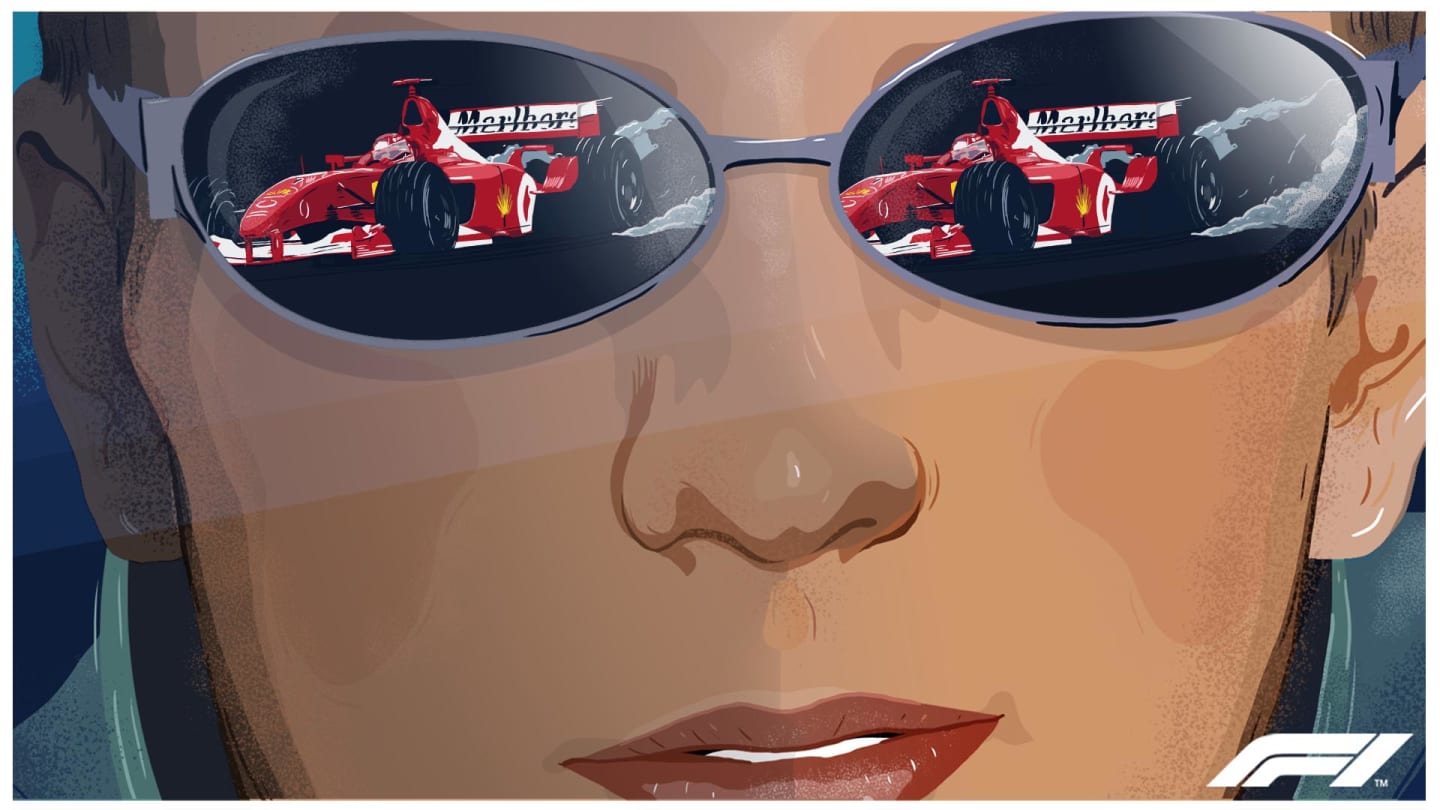
Getting noticed
There was a fair bit of downtime during each day of the test because the runs were kept short. But rather than just sit in the garage, Raikkonen wanted to use the time more wisely and went to watch Schumacher out on track. And it turns out the interest was mutual…
Jacky Eeckelaert: “He asked me if he could go and watch Michael Schumacher going through the corners. On the evening of the first day, after the briefing, and while I was making the programme for day two, there was a knock on the door of the motorhome and it was Michael. He asked who the new driver was, that was driving the Sauber. I told him it was Kimi and that 12 months ago he was just racing karts. He said ‘Well, he will be very, very fast’. So I was convinced he was on the right track!”
Olivier Panis: “His performance during that first test was really good. I was surprised by the decision to put him in the car, and surprised by his performance. I watched him a bit when I wasn’t in the car, I noticed he was very young but very quick – really very quick.”
Turning on the style
Now it was time to see whether Raikkonen had the ultimate pace. They sent him out on a heavy-fuel run. Then took out all the fuel, leaving him with enough to do a qualifying simulation. This was the ultimate test...
Willy Rampf: “When I was there, Kimi was doing the laps with 50kg, which was the normal fuel load for practice and racing. For qualifying, normally, we had a fuel load of about 12kg. We told him this was a new set of tyres with 50kg of fuel and do one lap - and we expect a good lap time. If he has an accident, it’s end of story. If you’re too slow, it’s also not very good. He did one lap with 50kg, we took the time and it was a reasonable time for someone who is not very experienced in a F1 car. Then we put the 12kg in and sent him out. With this fuel load, the difference in lap time is about 1.2s, which is what our simulations tell us and from our experience at Mugello. We did not tell him what the target was. We only told him it was a low fuel load and he should go for a qualifying lap. He did and he had a lap time improvement of 1.2s...
"It was very close to what we hoped for. This was amazing for somebody who does not know how a car with a qualifying fuel load behaves, because we'd never run that low fuel with him before. It was seriously amazing. During testing, he never damaged anything on the car. If he had spun into the gravel three times, everyone would have scratched their head and asked if it was a lucky shot with low fuel load or because he’s not so confident. It made it easier to convince Peter that this was a driver who knows exactly what he’s doing. He’s not driving at the limit, he always has something in reserve.”
So the proof was in the timesheets and the way he carried himself throughout. This was the driver Sauber wanted in the car for the following season – and that was the driver he got. It was a tough sell, given his age and lack of experience, but Sauber successfully convinced the FIA to give Raikkonen a super licence and the Finn rewarded his faith by scoring a point on his debut in the 2001 Australian Grand Prix. It was the start of a quite remarkable F1 career, that all began at a three-day test in Mugello…
YOU MIGHT ALSO LIKE
News ‘At least I know now’ – Bottas reflects on losing Kick Sauber seat for 2025 after finding himself in ‘unlucky situation’
News ‘I’ve been here before’ – Magnussen relaxed about future as he aims to end latest Haas stint on a high
News Bahrain International Circuit awarded FIA Three-Star Environmental Accreditation
News FIA Wednesday press conference – Las Vegas

